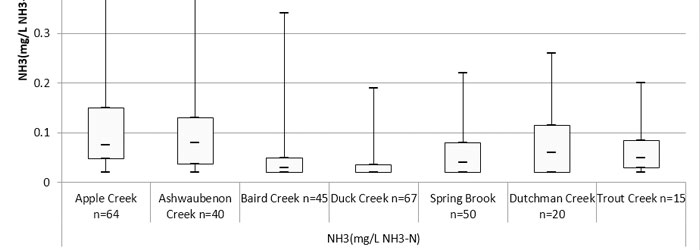Data and Results

What do the monitoring results tell us?
Monitoring data allows us to compare streams, assessing their overall water quality and biological health. Pollution impacts on the individual streams can be identified, providing local and state agencies with the knowledge necessary to make land use and policy decisions that will clean up our streams, the Fox River, and Green Bay. The following links provide descriptions of the specific conclusions that can be drawn from each parameter tested by the Lower Fox River Watershed Monitoring Program:
Quality Assurance and Control Methods
Student-teacher teams enter data to an online database and submit datasheets to the program coordinator. University staff audits collected data to ensure proper procedures, replications, and calculations. This assures that the data meets quality assurance objectives. Raw and audited data is available online for web-based query.
Students and teachers compare data and relate their results and activities to those of other student-teacher teams and to broader university and agency projects. Students can compare, contrast and explore how parameters change with time and between watersheds because all data is collected in the same way, using the same equipment for each team and by prior students
Browse the Database
Go to the Browse Database tab and select the stream and info you are interested in.
For definitions of terms relating to water quality monitoring, see the USGS online water science glossary.